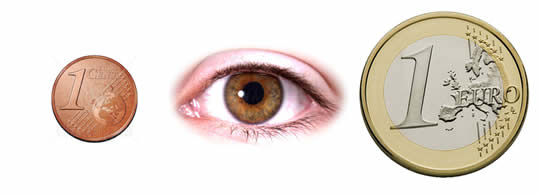Subliminal Motivation

People often do things and can’t say exactly why they did them. While it might seem that “acting without explanation” is the result of poor attention or irrational impulse, it turns out that our brains are wired to do this. It is possible, researchers at INSERM in Paris found, to motivate half the brain without the other half being aware of what’s going on.
The INSERM researchers discovered this by measuring how hard subjects could squeeze a grip with each hand. Then, they showed the subjects a picture of a high value (one-euro) or low value (one-cent) coin. The subjects were told they would earn a fraction of the coin’s value depending on how hard they squeezed. Naturally, one would expect that they would squeeze harder when they saw the image of the more valuable coin.
Here’s where the experimenters got tricky: they showed the coin image only to one eye, and only for 17 milliseconds. All possible combinations of eye and hand were tested, i.e., right eye & right hand, left eye & right hand, etc. Here’s what the researchers found:
Although the subjects could not correctly guess which coin they had seen – confirming that they were not conscious of what they saw – they squeezed harder when presented with the larger coin if the hand grip was on the same side of the body as the eye that had seen it. Their squeezes did not change depending on what the opposite eye saw, indicating that only half the brain was being motivated at a time. [From Scientific American Mind – Split Motivation by Melinda Wenner Moyer.]
Co-author of the study Mathias Pessiglione calls this motivation “subpersonal,” in that “one part of a person can be motivated while the other is not.”
The neuromarketing implications of this work aren’t clear. Advertisers are hardly in a position to direct subliminal images to one eye or the other, and even if they could (think 3D goggles that alternate frames) I doubt if there would be a great benefit. The main takeaway for me is confirmation that our brain is processing fleeting images that we can’t consciously recall seeing. Hence, as described in No-Attention Branding, we have to assume that consumers can process brand impressions even without being able to consciously recall that exposure.
If you couple our brain’s propensity to prefer familiar images and brands (see Subliminal Branding in Milliseconds and Brain Branding: The Power of Strong Brands) with its ability to process fleeting images without awareness, one can make a powerful argument for getting one’s brand identity in front of consumers whenever and wherever possible.
